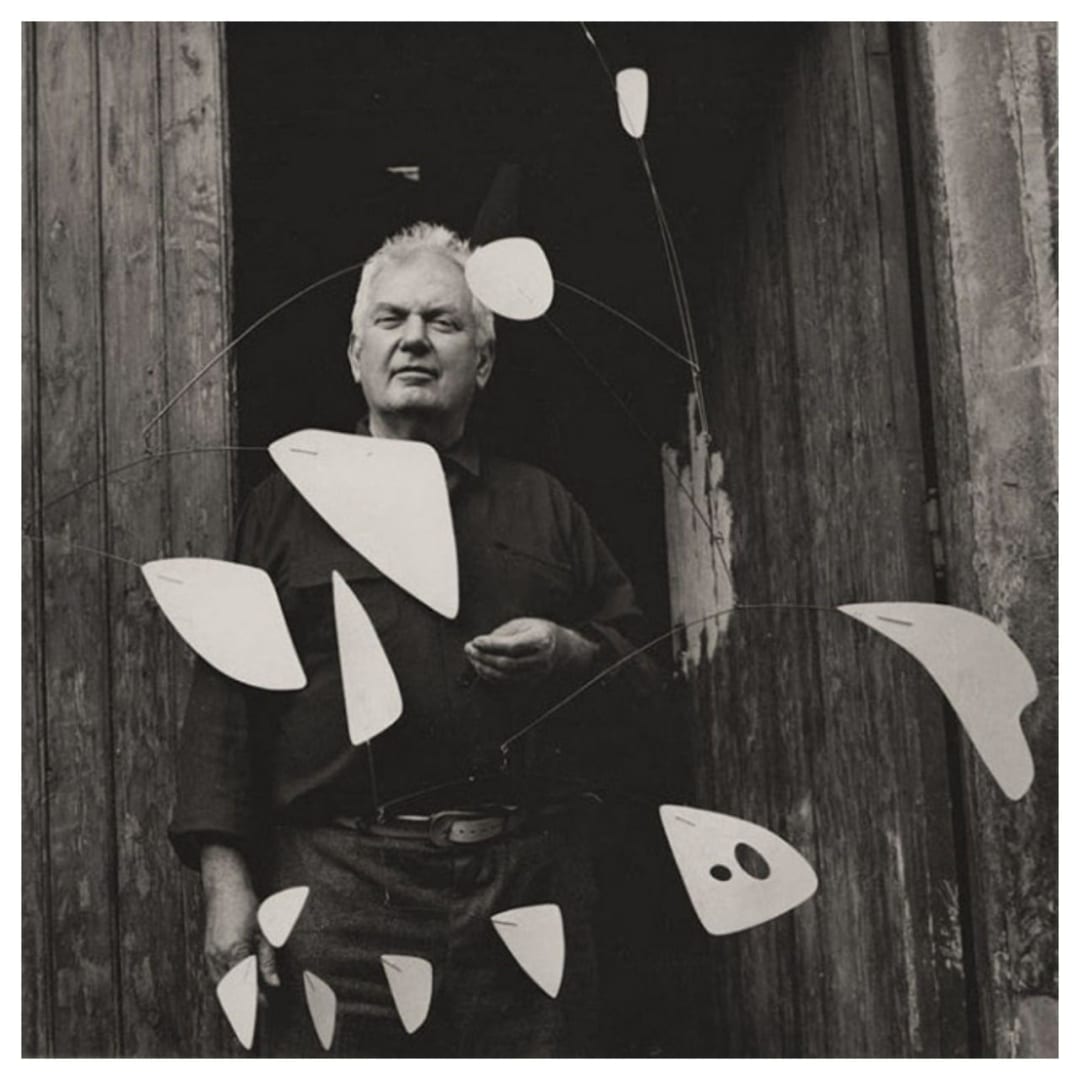Alexander Calder (1898–1976) was an American sculptor renowned for revolutionizing the world of modern art with his inventive approach to movement and space. Best known for his creation of "mobiles," Calder pioneered kinetic sculpture by introducing motion into art. His mobiles, delicate constructions of hanging metal parts that move with air currents, blurred the line between sculpture and performance, transforming static objects into dynamic, ever-changing forms.
Calder’s background in mechanical engineering and his early training as a painter profoundly influenced his sculptural work. His career took off in the 1930s when he was introduced to the surrealists in Paris, where he began experimenting with abstraction. While his mobiles garnered attention, Calder also created large-scale stationary sculptures, or "stabiles," which were monumental, often painted steel constructions that maintained a sense of movement and energy despite their permanence.
Throughout his career, Calder’s works were featured in major exhibitions worldwide, and he produced iconic pieces for public spaces, such as the stabile La Grande Vitesse in Grand Rapids, Michigan, and Flamingo at the Federal Plaza in Chicago. His work integrated art with engineering, giving shape to the fluidity of time and motion.
Calder’s impact on modern art was profound, influencing a range of artists, from fellow abstract sculptors to those working in kinetic and performance art. His ability to merge art, engineering, and technology continues to inspire and shape contemporary sculpture. Calder remains one of the 20th century’s most innovative and beloved artists.
